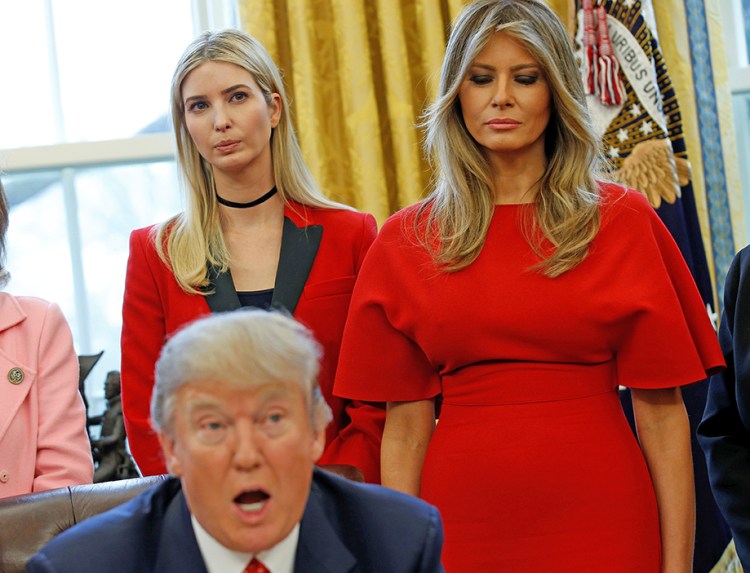In January 2015, President Obama visited Saudi Arabia. It was a high-profile trip: Obama was there to attend the funeral of the late Saudi King Abdullah at a time when the Washington-Riyadh relationship was strained for a number of factors, including the U.S. attempt to secure a nuclear deal with Iran. Much of the immediate attention, however, wasn’t on the president, but on then-first lady Michelle Obama and her choice of attire.
During a number of public events, she appeared without a headscarf – an unusual move in the conservative Islamic country where women are expected to cover their heads and many wear niqabs, a cloth which can cover almost all of the face. The decision sparked criticism on Saudi social media.
Before long, her lack of headscarf was triggering discussion back in the United States, as well. Many supported the first lady, arguing that gender equality shouldn’t take a back seat to religious sensitivities. However, one prominent Twitter user disagreed: “Many people are saying it was wonderful that Mrs. Obama refused to wear a scarf in Saudi Arabia, but they were insulted,” Donald Trump wrote. “We have enuf enemies.”
Two years later, the shoe is on the other foot. This weekend President Trump will arrive in Riyadh for his first trip as leader of the United States. Accompanying him will not only be his wife, Melania, but daughter Ivanka. It is unclear if the president will insist that they wear headscarves while in Saudi Arabia, though it seems unlikely.
Obama’s decision not to wear a headscarf was less unusual than it might have seemed at the time. While Saudi women are expected to cover their heads, exceptions are made for foreigners, and in some less conservative circles, Saudi women wear their hijabs loosely in a way that hints more at fashion than religion.
Some foreign guests to Saudi Arabia do choose to wear headscarves. Camilla, the Duchess of Cornwall and the wife of Britain’s Prince Charles, usually wears one on their trips there. And in 2007, then-first lady Laura Bush was photographed briefly wearing a headscarf she had received as a gift.
Most high-profile Western visitors, however, tend to forgo the scarves. For example, as secretary of state, Hillary Clinton visited the kingdom sans scarf in 2012. And German Chancellor Angela Merkel and British Prime Minister Theresa May also did not wear headscarves, instead opting to wear loosefitting clothes that covered their arms and legs instead.
Not all conservative Islamic nations are willing to make such concessions: Head coverings are generally required for female signatories when they visit Iran. This can put the visitors in difficult situations back home. For example, Sweden’s government was recently criticized because members of a delegation wore headscarves during a visit to Tehran, despite the nation’s declared feminist ethos.
In hindsight, the furor surrounding Obama’s headscarf can be attributed to a broader distrust of her husband’s policies regarding Saudi Arabia, which was in turn amplified by the growing power of social media in the Saudi kingdom. President Obama was notoriously skeptical of Saudi Arabia’s ambitions in the Middle East and had suggested Riyadh may need to learn to share the Middle East with its rival, Tehran. “It’s complicated” he told the Atlantic in 2016 when asked if the Saudi kingdom was a friend to America.
Although in the past Trump has been critical of Saudi Arabia – even accusing it of killing homosexuals and having links to the Sept. 11 attacks – he has softened his tone since becoming president, but he has continued his harsh criticism of Iran.
That he chose Saudi Arabia for the first destination during his first foreign trip as president is significant, and the kingdom is keen to welcome him. Russian state media reports that Foreign Minister Adel bin Ahmed al-Jubeir has said that Melania, a former model, is welcome to wear “any style in clothing” she wants while in the country.
Even so, the Trumps may be wise to keep in mind the optics of their trip. Much of the Saudi general public is more religiously conservative than their leaders, and recent polls suggest young Saudis in particular view the new U.S. president as being anti-Muslim. And just days after visiting Riyadh, Melania Trump is expected to accompany her husband to the Western Wall in Jerusalem and the Vatican to meet the Pope. In both of these locations, religious traditions means women are expected to dress modestly.
Send questions/comments to the editors.



Success. Please wait for the page to reload. If the page does not reload within 5 seconds, please refresh the page.
Enter your email and password to access comments.
Hi, to comment on stories you must . This profile is in addition to your subscription and website login.
Already have a commenting profile? .
Invalid username/password.
Please check your email to confirm and complete your registration.
Only subscribers are eligible to post comments. Please subscribe or login first for digital access. Here’s why.
Use the form below to reset your password. When you've submitted your account email, we will send an email with a reset code.